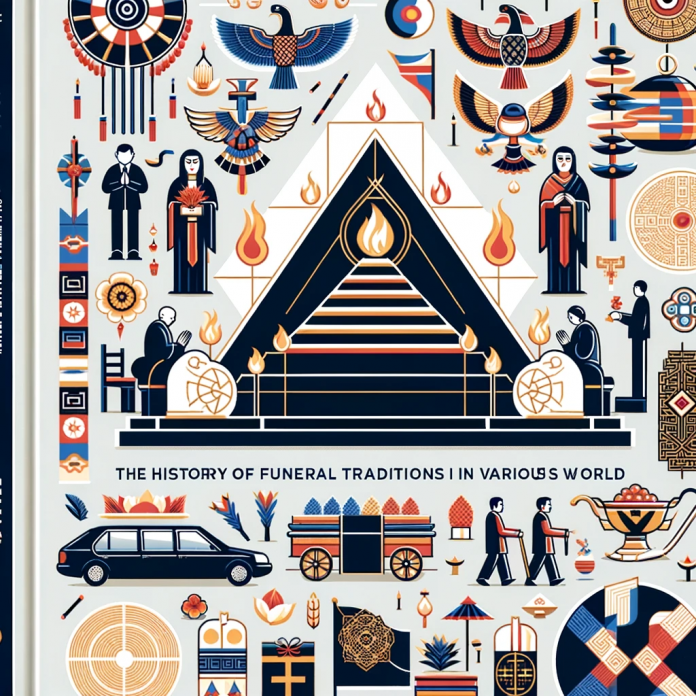Funeral traditions are deeply ingrained cultural practices that offer a fascinating insight into the beliefs, values, and customs of societies around the world. From the ancient Egyptians to modern-day cultures, the way we honor and remember the deceased has evolved significantly over time. This article explores the rich history of funeral traditions in various cultures, providing a comprehensive understanding of our shared human experience.
Funeral Traditions in Ancient Cultures
Egyptian Funeral Traditions
The ancient Egyptians held a profound belief in the afterlife, which was reflected in their elaborate funeral practices. The process of mummification, designed to preserve the body for the afterlife, was a central part of these rituals. The deceased were often buried with food, furniture, and other items they would need in the afterlife.
Pyramids and tombs were built as final resting places for the pharaohs and the wealthy. These structures were filled with intricate artwork and hieroglyphics that told stories of the deceased's life and achievements. The Book of the Dead, a guide to the afterlife, was often placed in the tomb to aid the deceased in their journey.
Greek Funeral Traditions
The ancient Greeks believed that the soul left the body after death and journeyed to the underworld. Funerals were considered a crucial rite of passage to ensure the deceased's safe journey. The body was washed, anointed with oil, and then laid out for viewing. A procession followed, leading the body to its burial or cremation site.
Grave offerings, including food, drink, and personal items, were common. These were intended to appease the spirits of the deceased and ensure their favor in the afterlife. Funeral games were also held in honor of the deceased, particularly for warriors and heroes.
Funeral Traditions in Eastern Cultures
Chinese Funeral Traditions
In traditional Chinese culture, honoring the ancestors is of utmost importance. Funeral rites are elaborate and may last several days, involving various rituals to ensure the deceased's peaceful journey to the afterlife. The body is cleaned, dressed in special clothing, and placed in a coffin, which is then sealed and placed in a burial chamber.
Offerings of food and paper money are made to provide for the deceased in the afterlife. In some regions, paper replicas of houses, cars, and other worldly goods are also burned as offerings. Ancestor worship, including regular offerings and ceremonies, continues long after the funeral to honor the deceased and maintain family ties.
Japanese Funeral Traditions
Japanese funeral traditions are deeply influenced by Buddhism. The body is washed and dressed in white, symbolizing purity, and then placed in a coffin. A wake is held, during which family and friends pay their respects and offer prayers for the deceased.
The body is then cremated, and the ashes are placed in a family grave or urn. Memorial services are held at various intervals after the funeral, up to several years later, to remember and honor the deceased. The belief in the transmigration of souls is a central part of these rituals, reflecting the Buddhist view of life and death as a continuous cycle.
Funeral Traditions in Modern Western Cultures
American Funeral Traditions
Modern American funeral traditions are a blend of practices influenced by various cultures and religions. The body is typically embalmed and displayed in a casket for a viewing or visitation. A funeral service follows, often involving eulogies, readings, and music. The body is then buried or cremated, according to the deceased's or family's wishes.
Memorial services or celebrations of life are also common, particularly when the deceased has been cremated. These gatherings are less formal than traditional funerals and focus on celebrating the deceased's life rather than mourning their death.
British Funeral Traditions
Traditional British funerals are often solemn and formal events. The body is usually embalmed and placed in a coffin for a viewing, followed by a funeral service at a church or crematorium. Hymns, prayers, and eulogies are common elements of the service.
After the service, the body is buried or cremated. A wake is often held, providing an opportunity for friends and family to gather and remember the deceased. Over time, more personalized and less formal funerals have become increasingly common, reflecting a shift towards celebrating the individual's life and achievements.
Conclusion
Funeral traditions are a reflection of our beliefs, values, and cultural heritage. They provide a means to honor the deceased, comfort the living, and affirm our connections to each other and to the cycle of life and death. As we continue to evolve and grow as a global society, these traditions will undoubtedly continue to change and adapt, reflecting our shared human journey.


-banner.png)





